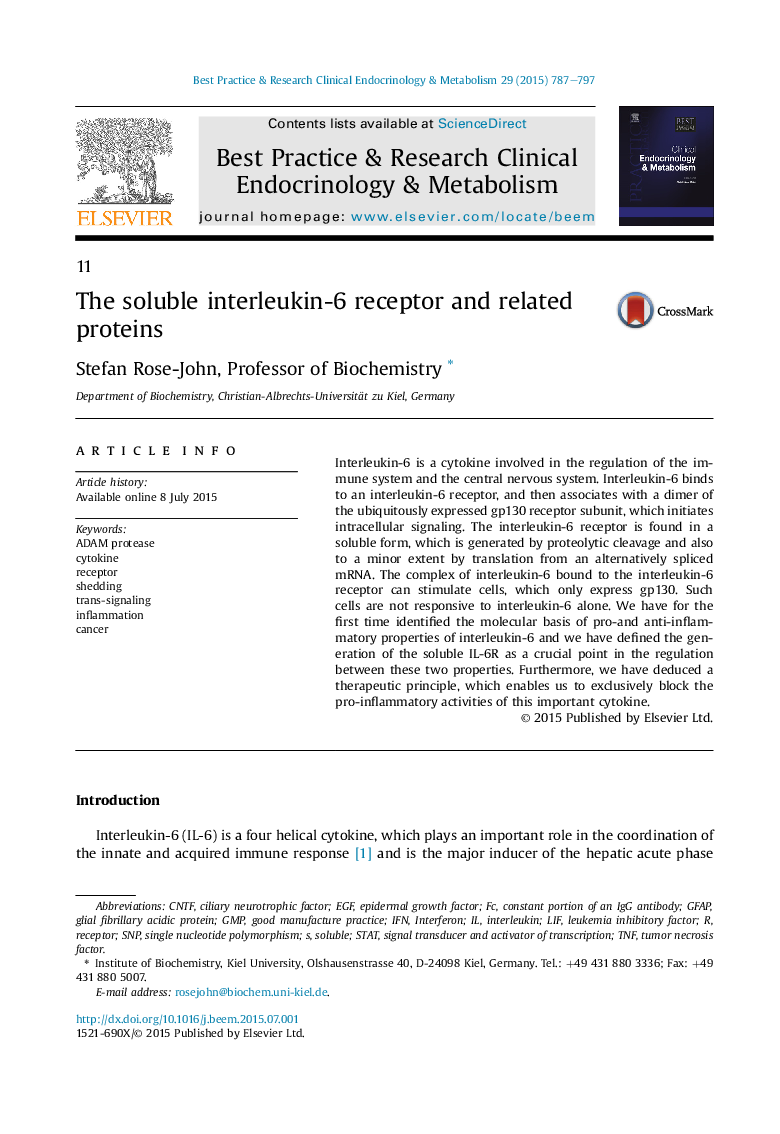| Article ID | Journal | Published Year | Pages | File Type |
|---|---|---|---|---|
| 2791517 | Best Practice & Research Clinical Endocrinology & Metabolism | 2015 | 11 Pages |
Interleukin-6 is a cytokine involved in the regulation of the immune system and the central nervous system. Interleukin-6 binds to an interleukin-6 receptor, and then associates with a dimer of the ubiquitously expressed gp130 receptor subunit, which initiates intracellular signaling. The interleukin-6 receptor is found in a soluble form, which is generated by proteolytic cleavage and also to a minor extent by translation from an alternatively spliced mRNA. The complex of interleukin-6 bound to the interleukin-6 receptor can stimulate cells, which only express gp130. Such cells are not responsive to interleukin-6 alone. We have for the first time identified the molecular basis of pro-and anti-inflammatory properties of interleukin-6 and we have defined the generation of the soluble IL-6R as a crucial point in the regulation between these two properties. Furthermore, we have deduced a therapeutic principle, which enables us to exclusively block the pro-inflammatory activities of this important cytokine.
